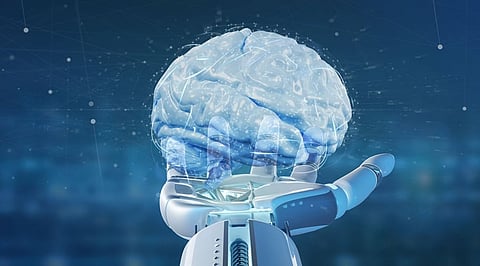
- Insights
- Cryptocurrencies
- Stocks
- White Papers
- Industry
- Geography
- Insights
- Cryptocurrencies
- Stocks
- White Papers
- Industry
- Geography


In today's date, modern robotic development is inspired by studying the human brain, so says Mikhail Lebedev, Academic Supervisor at HSE University's Centre for Bioelectric interfaces. An article in Science Robotics called "Neuroengineering challenges fusing robotics and neuroscience" also talks about how neuroscience and robots are developing hand in hand, contributing to the progress in both fields to develop more advanced android robots.
Don't most robots look like humans? If sci-fi movies have taught us one thing, it's that robots have two arms, two legs, and a head. It's not necessary from an engineer's perspective, but when a robot has to interact with people, it's easy for humans to trust if a machine looks like one of us. It's also possible to ensure that not just the body, but the "brain" of the robot also resembles that of a human. When developing mechanisms for perception, information processes, and control, engineers take inspiration from the structure of the human nervous system.
For example, to mimic the human eye and vision, cameras that can move on different axes are installed. Based on the knowledge of how visual signals are processed in humans, engineers design the robot's sensors based on the same principles. This is how robots are given the human ability to see the world in 3D.
We humans have a vestibulo-ocular reflex. It's when our eyes apply stabilization using vestibular information whenever we make a movement, allowing the structure our eyes are seeing to be stable. Similarly, there may be acceleration and orientation sensors on a robot's body to stabilize the visual perception of body movements of the outside world.
Did you know that a robot can experience the sense of touch too? It uses artificial tactile information to grip things and react when it touches an obstacle. Not just sensory experiences, robots gave specialized nerve cells designed to control motor activities like walking.
The connection between neuroscience and robotics is interrelated. Just like how engineers use neuroscience principles to create a robot, robots are created for neuroscience too. Developing mechanical and computer models of a human nervous system allows neuroscientists to understand neurological functions and biomechanics in a better way.
A prominent domain of neuroscience that uses robots is in designing neural interfaces. These are systems for controlling external devices using brain signals. They're necessary for the development of neuroprostheses (artificial limbs) and exoskeletons.
The rapid development of humanoid robots is becoming a reality, day after day. That future is not far when we will have robots coexisting with humans, walking around us, thinking like us, and imitating us. They will also be doing things that earlier only humans could do. Obviously, this will also mean the field of neuroscience will flourish. It will open new opportunities for neuroscientists to get a deeper knowledge about perplexing human brains.
So, don't be surprised to see a humanoid employee in the future.
